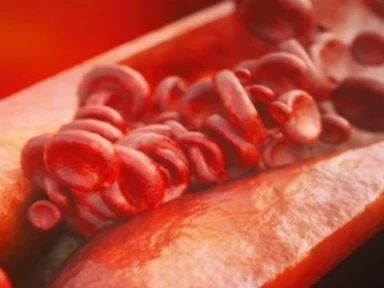Switching From Statin Monotherapy to Statin/Ezetimibe Combination
Is it associated with additional low-density lipoprotein cholesterol reduction benefits?
Main Takeaway
Low-density lipoprotein cholesterol (LDL-C) was further reduced by 31.0–41.0% after switching from a statin monotherapy to a statin plus ezetimibe therapy
- Among the total enrolled patients, 88.3–90.1% of the patients successfully attained the target LDL-C goal of <100 mg/dL (all intensity groups, P <0.01)
Key Results
- Patients with hyperlipidaemia should continue their recommended diet, lifestyle and medications during the COVID-19 pandemic (I, A).
- Patients with confirmed COVID-19 who are too unwell to receive medications orally can temporarily suspend LLT (I, E).
- In recovered patients, oral LLT should be reassessed and recommenced before or soon after leaving the hospital (I, B).
- In patients with COVID-19 and abnormal liver function tests, LLT should be continued until alanine transaminase (ALT) or aspartate transaminase (AST) rises to over 3 times the upper limit of normal (I, B).
- Statins should be continued in patients with COVID-19 (1, C) until ALT/AST rises (1, B), drug-drug interactions occur (1, C) or creatine kinase increases 10-fold to levels 2000 IU/mL in asymptomatic patients or at a lower level of 5-fold the upper limit of normal in symptomatic patients (1, B).
- Drugs such as remdesivir, lopinavir and ritonavir being used for COVID-19 treatment can either compete for metabolism with some statin types or cause hepatotoxicity.
- In such cases, switching from other statins (atorvastatin, simvastatin, pitavastatin or pravastatin) to low-dose rosuvastatin is recommended.
- Kidney function should be evaluated if myositis occurs (1, B).
- All statins should be temporarily discontinued with azithromycin and tocilizumab treatment.
- As ezetimibe and proprotein convertase subtilisin/kexin type 9 inhibitors (PCSK9i) are considered safe therapeutic options with no known drug interactions with COVID-19 medications, they should be continued in patients with COVID-19 (ezetimibe: 1, C).
- Ezetimibe should be stopped if significant drug-drug interactions occur (1, C) or ALT and/or AST levels rise over 3 times the upper limit of normal (1, B).
- PCSK9i should be stopped until recovery and discharge from the critical care unit in critically ill patients with COVID-19 (1, E).
- If statins, ezetimibe or PCSK9i treatments are suspended, benefit vs risk assessment to reinitiate the therapy should be considered as soon as the patient recovers (1, B).
- For patients with HoFH and FCS, lipid specialist should be consulted before making any changes to the therapy.
- Lomitapide should be temporarily discontinued in patients who are acutely ill, on antimicrobial medications with known significant drug interactions, critically ill and/or unable to take oral medications (1, C).
- In patients with FCS, volanesorsen should be avoided and very low-fat diet should be continued (1, C).
- Fibrates (1, C) and omega-3 fatty acids should be continued unless myopathy occurs (1, B) or the patient is critically ill (1, C), respectively.
- As cardiovascular outcome data on the use of niacin and bile acid sequestrants are limited, these agents should be temporarily discontinued in patients with COVID-19 (1, C).
Why This Matters
Though intense LDL-C management is recommended in order to attain desired targets, the percentage of patients attaining the target LDL-C remains substantially low
- This real-world study evaluated the effect of switching from statin monotherapy to statin/ezetimibe combination therapy in terms of target LDL-C goals attained
Study Design
Retrospective study: electronic medical records of 4,252 patients from two Korean tertiary care medical centers (1 January 2015 - 31 December 2017)
- Six statin/ezetimibe combinations were assessed: – Atorvastatin 10 mg plus ezetimibe 10 mg – Atorvastatin 20 mg plus ezetimibe 10 mg – Atorvastatin 40 mg plus ezetimibe 10 mg – Rosuvastatin 5 mg plus ezetimibe 10 mg – Rosuvastatin 10 mg plus ezetimibe 10 mg – Rosuvastatin 20 mg plus ezetimibe 10 mg
Study outcomes: LDL-C reductions; percentage of patients attaining LDL-C levels of <100 mg/dL after 3 months of combination treatment (vs baseline values)
Key Results
Effect of combination therapy on LDL-C levels after 3 months of treatment (vs baseline):
- Atorvastatin 10 mg plus ezetimibe or rosuvastatin 5 mg plus ezetimibe:
- LDL-C level reduction = 31.0% (P <0.01)
- Patients attaining LDL-C target (<100 mg/dL) = 88.3% vs 35.3% at baseline (P <0.01)
- Atorvastatin 20 mg plus ezetimibe or rosuvastatin 10 mg plus ezetimibe:
- LDL-C level reduction = 36.4% (P <0.01)
- Patients attaining LDL-C target = 90.1% vs 33.4% at baseline (P <0.01)
- Atorvastatin 40 mg plus ezetimibe or rosuvastatin 20 mg plus ezetimibe:
- LDL-C level reduction = 41.0% (P <0.01)
- Patients attaining LDL-C target = 87.5% vs 21.9% at baseline (P <0.01)
Switching from statin monotherapy to rosuvastatin plus ezetimibe exhibited greater LDL-C reductions than atorvastatin plus ezetimibe
- Patients switching from a low-intensity statin to combination therapy:
- Atorvastatin (10, 20 mg) plus ezetimibe = 40.9%, 48.7%
- Rosuvastatin (5, 10 mg) plus ezetimibe = 49.2%, 51.8%
- Patients switching from a moderate-intensity statin to combination therapy:
- Atorvastatin (10, 20, 40 mg) plus ezetimibe = 32.8%, 36.1%, 37.3%
- Rosuvastatin (5, 10, 20 mg) plus ezetimibe = 29.3%, 38.7%, 45.8%
- Patients switching from a high-intensity statin to combination therapy:
- Atorvastatin (10, 20, 40 mg) plus ezetimibe = 12.4%, 27.6%, 37.4%
- Rosuvastatin (5, 10, 20 mg) plus ezetimibe = 24.1%, 30.6%, 37.4%
Limitation
- This study had the inherent limitations of retrospective studies, lacked information regarding patient adherence, and did not evaluate adverse effects
- The percentages of patients attaining target LDL-C levels (<100 mg/dL) was calculated without classifying their risk factors
- Lee J, Lee SH, Kim H, Lee SH, Cho JH, Lee H, et al. Low-density lipoprotein cholesterol reduction and target achievement after switching from statin monotherapy to statin/ezetimibe combination therapy: Real-world evidence. J Clin Pharm Ther. 2020;46:134-142. doi: 10.1111/jcpt.13271.




